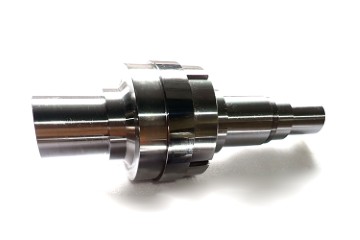Tungsten Carbide Hardness vs Diamond vs Other High Hardness Materials
The hardness of tungsten carbide can achieve a range from 89 to 95 HRA, which corresponds to approximately 69 to 82 HRC. Its Mohs hardness is around 9, and its […]
The hardness of tungsten carbide can achieve a range from 89 to 95 HRA, which corresponds to approximately 69 to 82 HRC. Its Mohs hardness is around 9, and its Vickers hardness is approximately 2400 Hv.
In the selection and use of high-hardness materials, tungsten carbide has gained widespread application due to its performance and cost-effectiveness. Below, the Mohs Hardness and Vickers Hardness of these high-hardness materials will be listed for comparison.
Low-price custom solutions. Our factory business includes designing, developing, and manufacturing powder metallurgy moulds, carbide parts, powder injection moulds, stamping toolings and precision mould parts.
WhatsApp: +86 186 3895 1317 Email: [email protected]
Comparative Analysis of Hardness
1. Diamond
- Mohs Hardness: 10
- Vickers Hardness: Approximately 10,000 Hv
2. Cubic Boron Nitride (cBN)
- Mohs Hardness: 9-10
- Vickers Hardness: Approximately 4,500-5,000 Hv
3. Silicon Carbide (SiC)
- Mohs Hardness: 9-9.5
- Vickers Hardness: Approximately 2,400-2,800 Hv
4. Titanium Diboride (TiB2)
- Mohs Hardness: Approximately 9-9.5
- Vickers Hardness: Approximately 3,000-3,500 Hv
5. Silicon Nitride (Si3N4)
- Mohs Hardness: Approximately 9
- Vickers Hardness: Approximately 1,800-2,200 Hv
6. Boron Carbide (B4C)
- Mohs Hardness: Approximately 9-9.5
- Vickers Hardness: Approximately 3,000 Hv
7. Tungsten Carbide (WC)
- Mohs Hardness: Approximately 9
- Vickers Hardness: Approximately 2,400 Hv
8. Aluminum Oxide (Al2O3)
- Mohs Hardness: 9
- Vickers Hardness: Approximately 2,100-2,200 Hv
9. Aluminum Diboride (AlB2)
- Mohs Hardness: Data not commonly available
- Vickers Hardness: Approximately 2,500 Hv
Domains of Application
Each of these materials finds its niche based on hardness, thermal stability, and mechanical properties:
- Diamond: Used primarily in precision cutting, micro-drilling, and high-end abrasives.
- Cubic Boron Nitride: Ideal for machining hardened steels and wear-resistant coatings due to its thermal stability.
- Silicon Carbide and Titanium Diboride: Common in applications requiring high temperature resistance and wear resistance.
- Silicon Nitride and Boron Carbide: Employed in advanced ceramics and ballistic armor.
- Tungsten Carbide: Extensively used in the production of industrial cutting tools, mining tools, and wear parts.
- Aluminum Oxide and Aluminum Diboride: Utilized in abrasive and refractory applications.
Cost and Economic Aspects
The cost of these materials can vary significantly, influencing their adoption in various industries:
- Diamond: High cost limits its use to specialized applications.
- Cubic Boron Nitride and Silicon Carbide: Offer a good balance between cost and performance, making them suitable for broader applications.
- Tungsten Carbide: Known for its excellent cost-to-performance ratio, particularly in bulk applications like tooling.

Advantages and Disadvantages
Each material presents unique benefits and limitations:
- Tungsten Carbide: While incredibly hard and wear-resistant, it is also brittle and not suited for applications involving high impact or shock.
- Diamond: Offers unmatched hardness and cutting capability but is expensive and less impact resistant.
- Cubic Boron Nitride: Provides excellent hardness and thermal resistance but comes at a higher cost than more conventional materials.
Conclusion
Selecting the right material for a specific application involves balancing hardness, cost, and specific material properties. Tungsten carbide often emerges as a favored choice due to its robustness in industrial settings, though each material can be the best fit depending on the specific requirements of the application.
Discussion Prompt: What are your experiences with these materials? Which properties do you prioritize for your specific needs? Share your insights and let’s discuss the best applications for these high-hardness materials.









